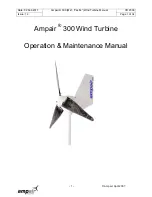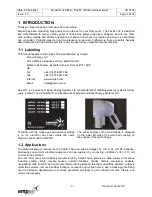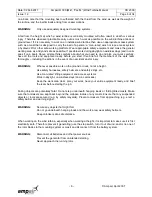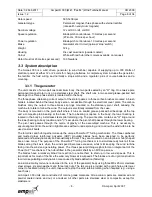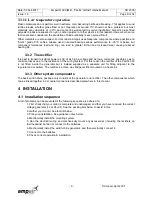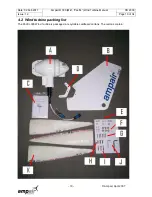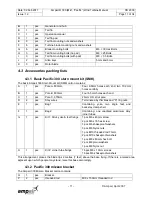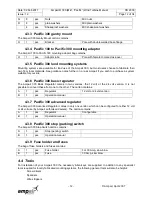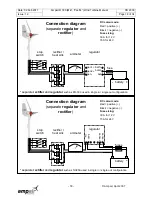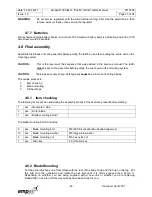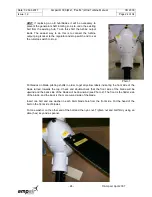
Date: 02 Feb 2011
Ampair ® 300 (Mk1, “Pacific”) Wind Turbine Manual
CD 2300
Issue: 1.2
Page 9 of 34
- 9 -
© Ampair, April 2007
3.3.1.1
Low temperature operation
Plastic materials do not perform well in extreme cold, becoming brittle and breaking. This applies to wind
turbine blades, whether glass filled or not. Operation at around 0°C should not be a problem, but most
materials are vulnerable at
–20°C and cannot be warranted to survive indefinitely. Ampair‟s glass filled
polyester blades are superior to nylon, carbon polymer or other plastics in this respect. However, when ice
factors are also considered, the prediction of blade reliability is even more difficult.
Other materials are also suspect. For this reason Ampair uses Neoprene components where possible and
"Arctic" grade PVC cables. Grease used in sealed bearings allows performance to
–
30°C or below, but
component tolerances (ball and ring) can lead to greater friction and increased wear causing reduced
bearing life.
3.3.2 The rectifier
It is best to transmit electrical power as AC at as high a voltage and as low a current as possible so as to
minimise losses due to the resistance of the wiring system. For this reason the rectifier of the Pacific 300
is not fitted inside the generator but is instead supplied as a separate unit for fitting adjacent to the
regulator and or battery. The rectifier is a three way bridge rectifier mounted on a heat sink.
3.3.3 Other system components
The basic wind turbine package only consists of the generator and rectifier. The other components which
can be linked together in a modular manner are described elsewhere in this manual.
4 INSTALLATION
4.1 Installation sequence
A lot of problems can be prevented if the following sequence is adhered to:
1. First check that your order is complete and undamaged, and that you have received the correct
voltage generator (12 or 24 volt). See the packing lists below to assist in this.
2. Gather your tool kit. See tool list below.
3. Plan your installation. See guidance notes below.
4. Mechanically install the mounting system.
5. Run the electrical wiring and mechanically mount any accessories (including the rectifiers on
their heatsink) but do not connect to the batteries.
6. Mechanically install the wind turbine generator, and then electrically connect it.
7. Connect to the batteries.
8. Check correct operation & installation.

